An assistive sleep device that detects and soothes nightmares, designed for those who experience PTSD related nightmares.
Don't wanna be here? Send us removal request.
Video
tumblr
Final Video
Who did what?
Film Video: Steph, Isobel, Lily
Edit video: Lily
0 notes
Text
Final Photos
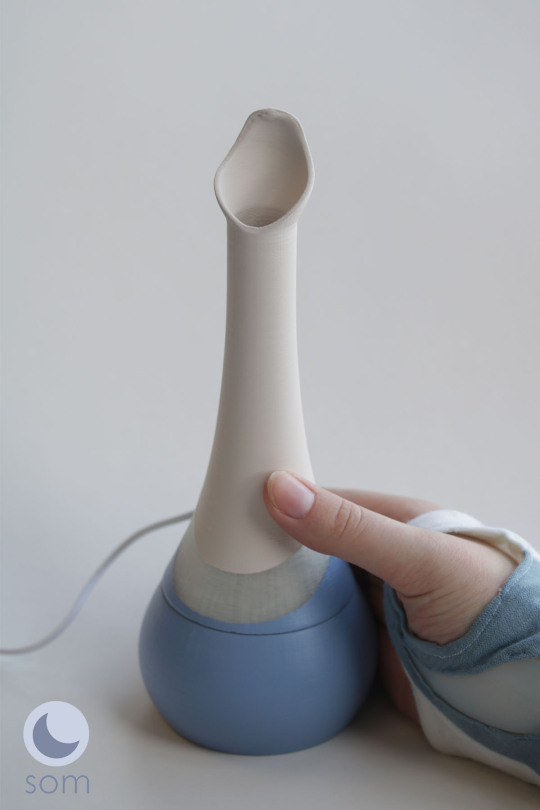
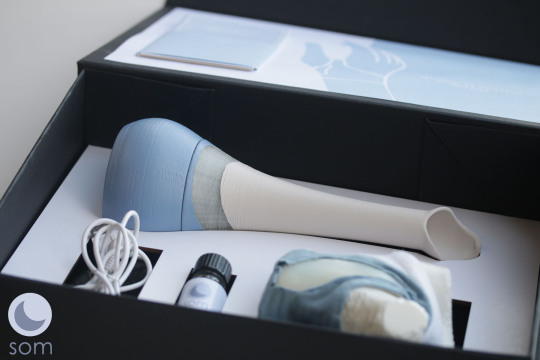
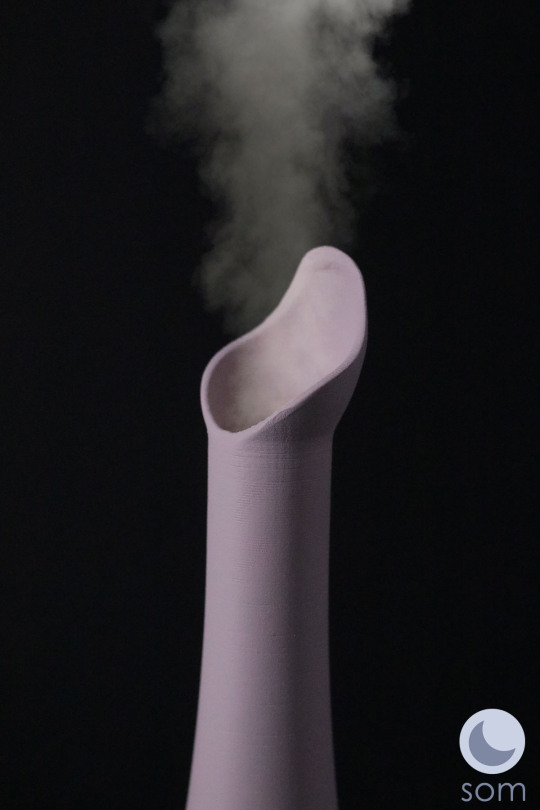
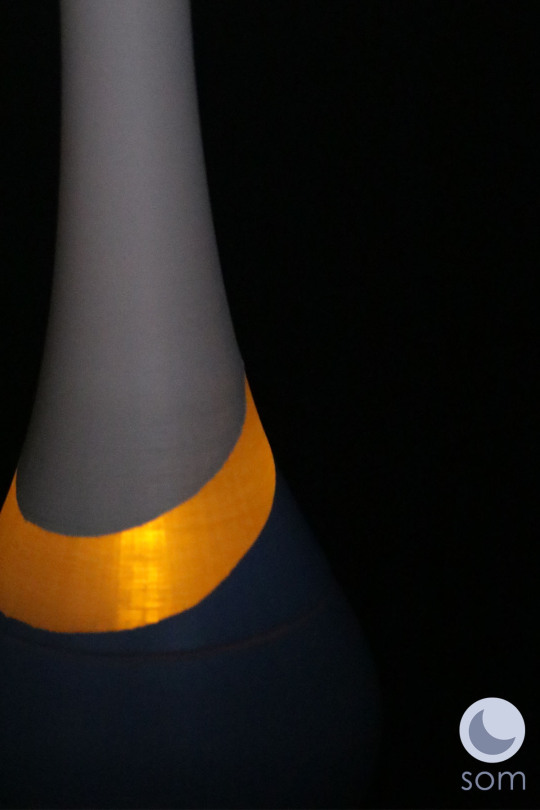
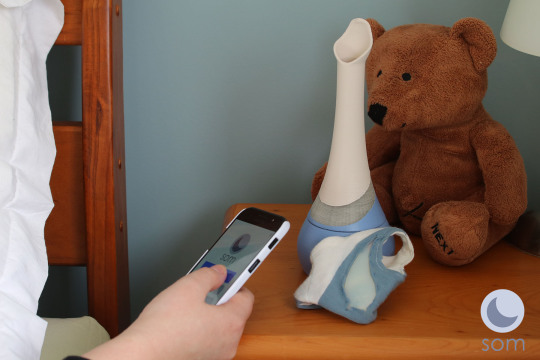
Who did what?
Take photos: Steph and Isobel
Edit photos: Lily
0 notes
Video
tumblr
Video of the circuit working with a pulse sensor, rain sensor and both LEDs
0 notes
Text
Technology
The input was the heart rate sensor and the rain sensor (as we could not get hold of a sweat sensor, but the rain sensor works just as well). The output was the LED light and the aroma diffuser.
With the help of Phoebe, we put together code that activated LED lights when the rain sensor and pulse sensor was activated.
Heart Rate Sensor:
At first, we found the pulse sensor to be touchy, when we looked at the readings on the Arduino app they were all over the place and it was difficult to read. Isobel did some research and found a code that works with what we needed and read what was coming from the pulse sensor with BPM. To measure what reading we needed to detect the nightmare we found that when you are experiencing a nightmare the BPM go up to 180 BPM whereas the resting heart rate is 60-100 BPM. To make sure the code and sensor worked we set the activation number for the LED light lower than what it might be for a nightmare, we measured it off when we got scared from watching scary videos.
Rain Sensor:
The rain sensor worked straight away once connected. We put a wet paper towel on the sensor to resemble a sweaty hand.
Connecting the diffuser:
It was easy to connect the LED light to the circuit but connecting the diffuser was difficult. We had to cut the wires, resolder and then see if it would work but unfortunately, it broke and the electrical components stopped working. We had very little time to find a humidifier that would ship in time to try it again.
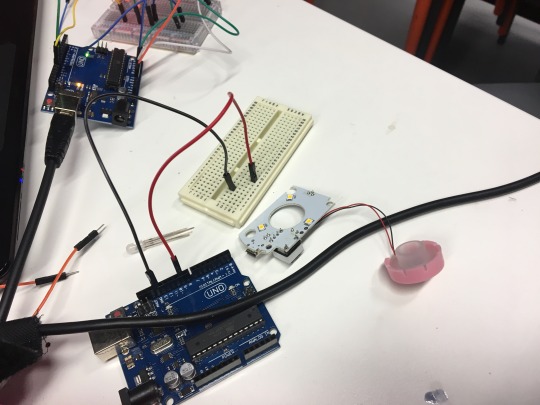
Final Circuit:
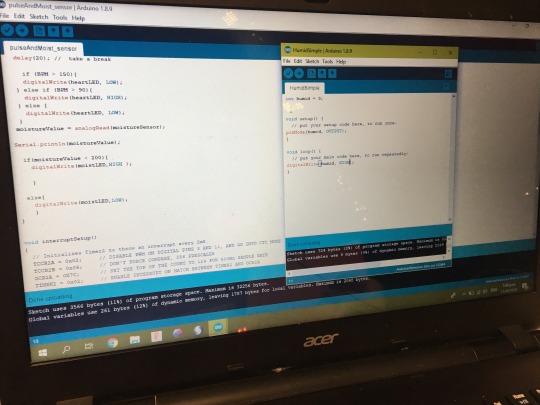
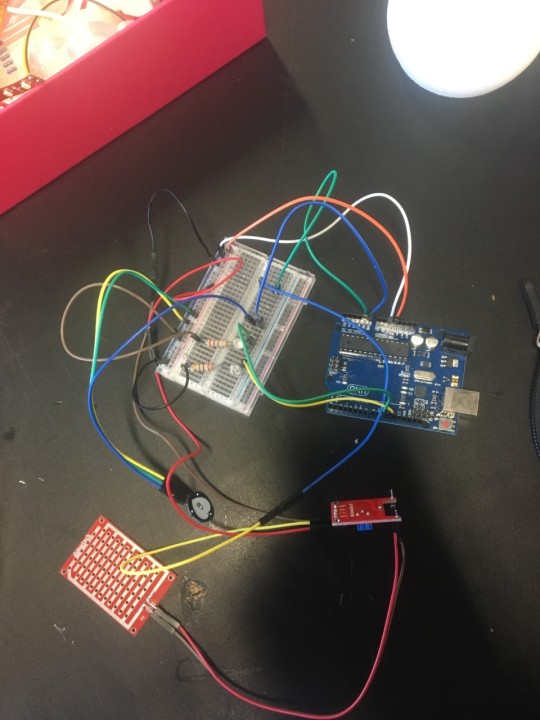
Who did what?
Technology - Lily, Steph and Isobel.
0 notes
Text
Packaging Design
Top of packaging:
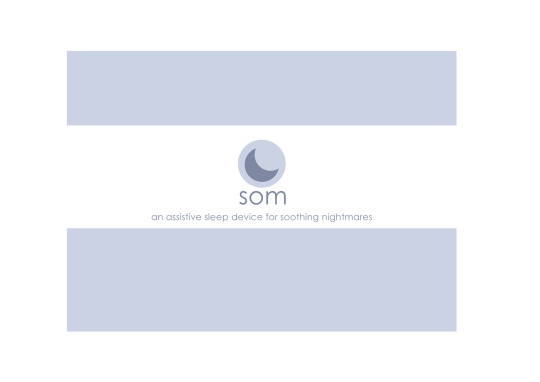
Instruction pamphlet:

Inside of box:
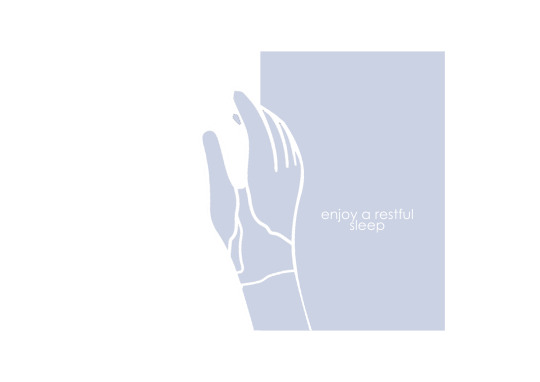
0 notes
Text
Logo Design
It took a while to come up with a name for the project, we settled with som. Som is derived from the word Somnus (Roman God of sleep) and Somnum (latin for sleep).
Once we had the name we began coming up with logo concepts.
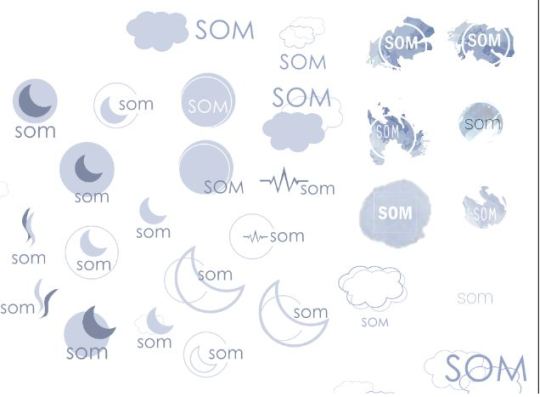
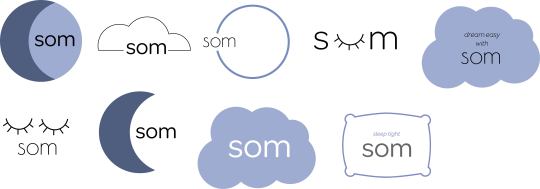
Chosen Logo:
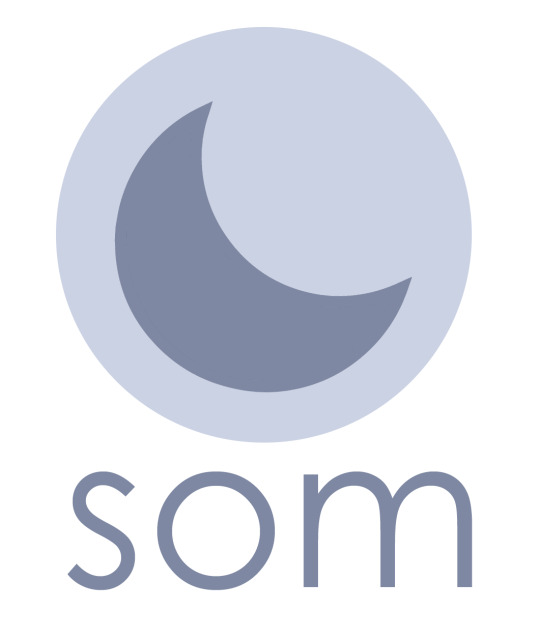
Who did what:
Inital name and logo ideas: Steph and Isobel
Further development: Steph and Lily
0 notes
Text
Output Form
The output form is not connected to the input form (the glove), we wanted something that acts like a companion to the glove and sits on the bedside table. The two components would ideally be connected via bluetooth.
Initial concepts:
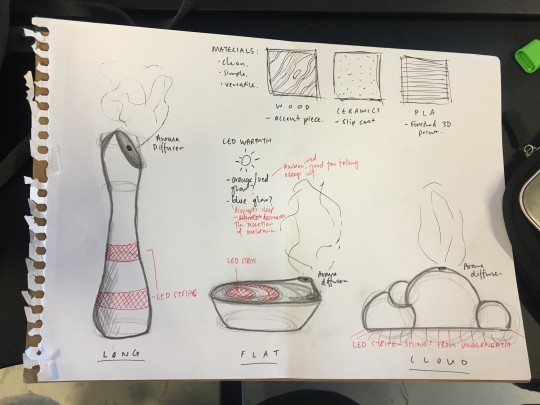
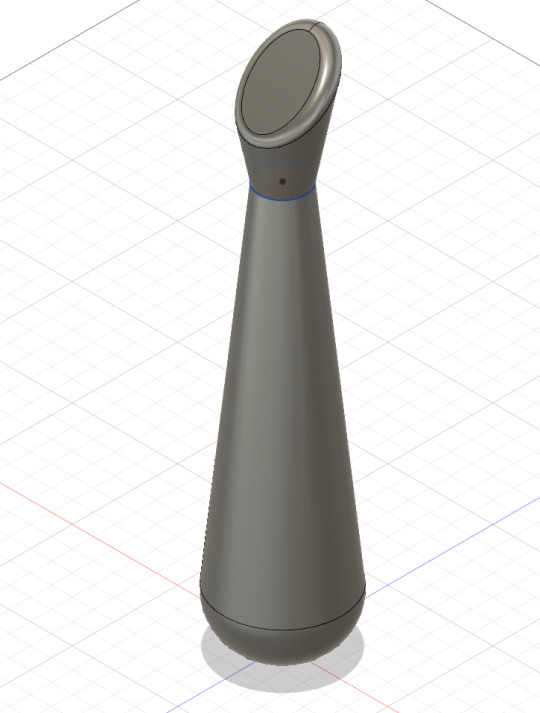
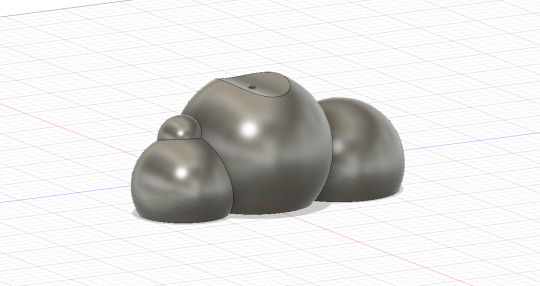
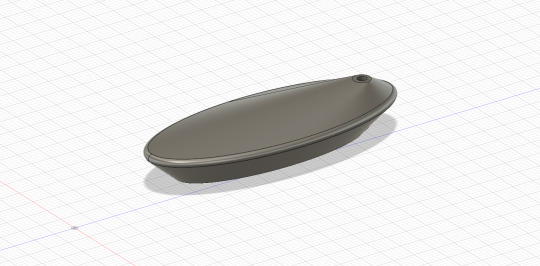
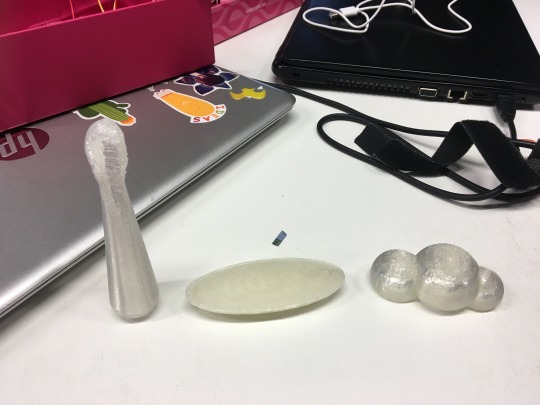
As a group, we decided to keep developing the longer form.
Development:
The shape was altered slightly and was 3D printed on the upBox printers.
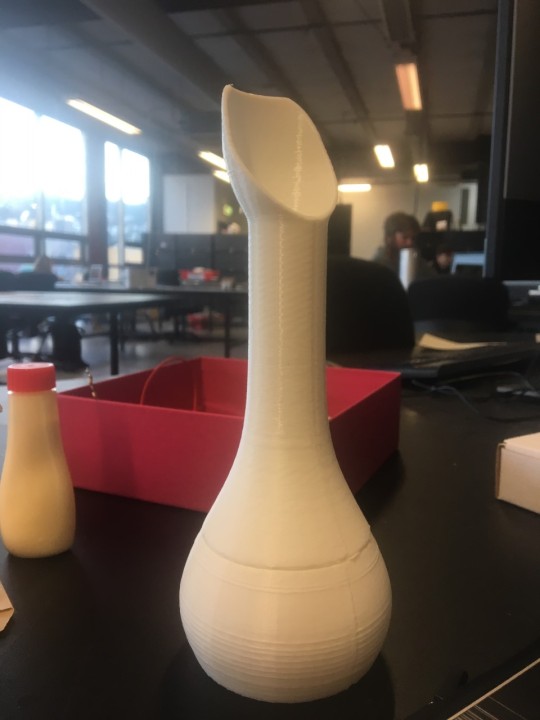
A few more alterations were made and then the final form was printed. We decided to 3D print the final form because it was quick and an easy way to produce the fluid form.
When making the diffuser we had to consider where the water would sit, how to get to the water compartment and where the electronics would be. We looked at the diffusers we had purchased and took inspiration from them.
Once the form was 3D printed we decided to finish it.
First,we sanded it down until it was smooth.
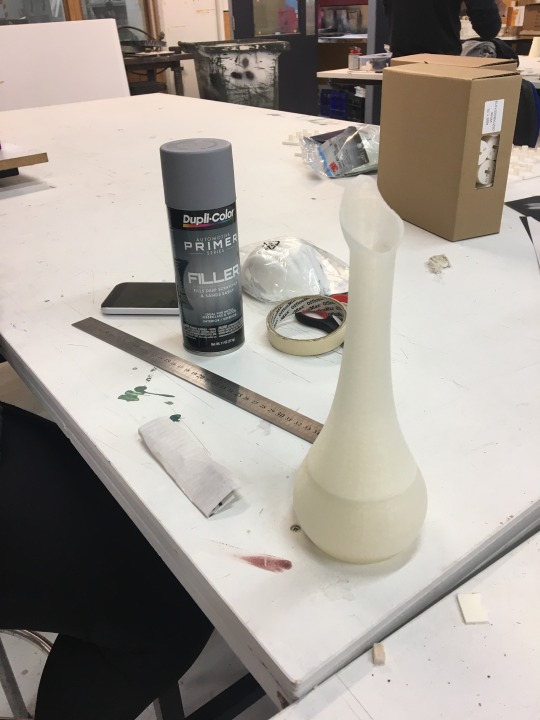
Then, we sprayed it with filler to make the surface more even. And then finally applied a coat of spray paint.
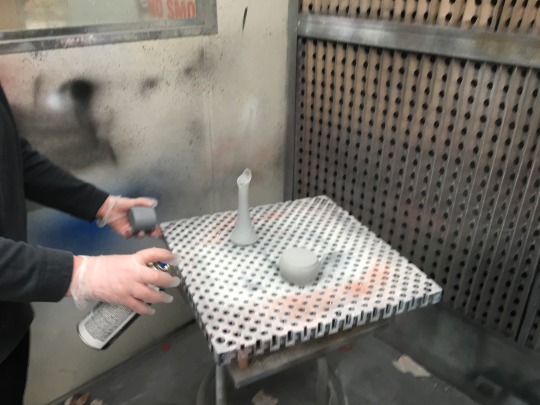
We chose to use blue and white because it matched the colours of the glove, because the two werent physically connected we wanted to show connection through aesthetic.
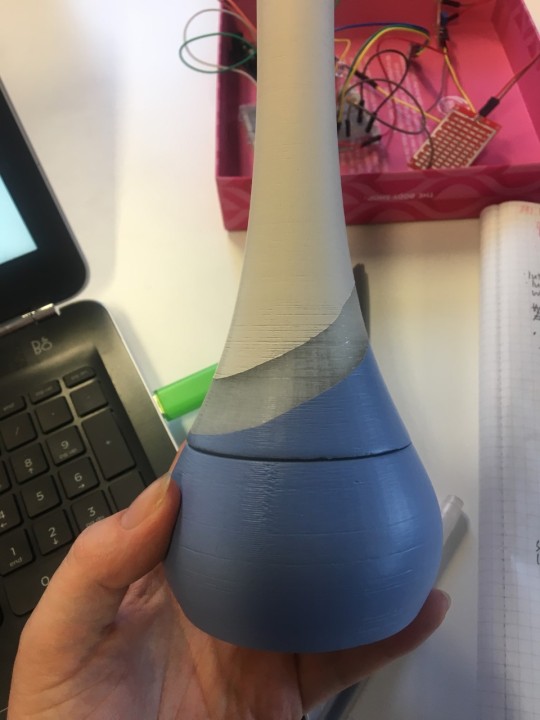
Electrical components of diffuser (aroma diffuser and LED light):
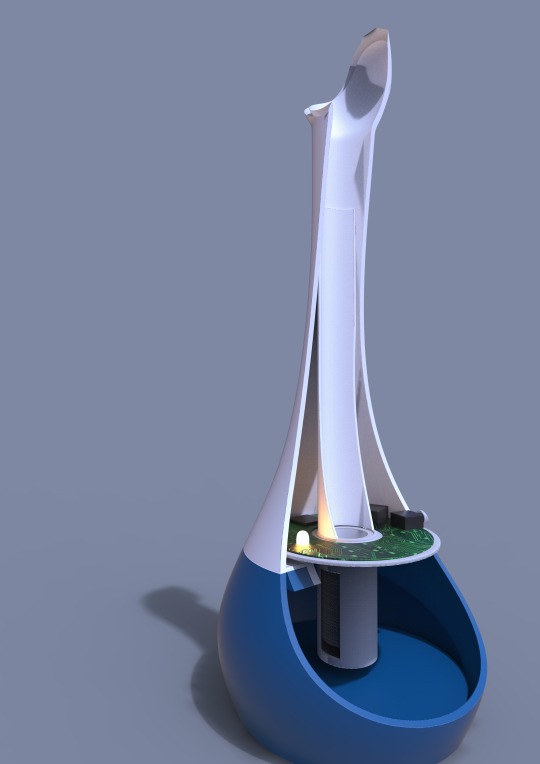
Who did what?
Initial form ideas: Lily
Development of form: Steph
3D modelling and printing of final form: Steph
Finishing model: Lily and Isobel
Component modelling and rendering: Isobel
0 notes
Text
Sensor Form - Agilus Part
To hold the sensors and add structure to the fabric glove we decided to print a part on the J750 printer downstairs.
First, we explored clay forms that could be embedded into the glove. Ideally, they would flow from the wrist, where the pulse sensor sits, to the palm, where the sweat sensor sits.
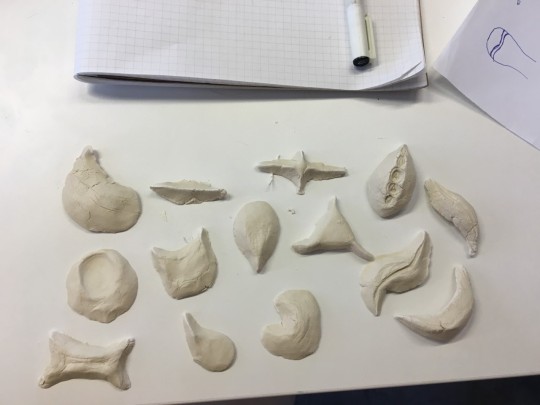
Next, we created a form on fusion and 3D printed it in TPU. Once we got the ideal size and shape we sent it off to be printed on the J750 printer.
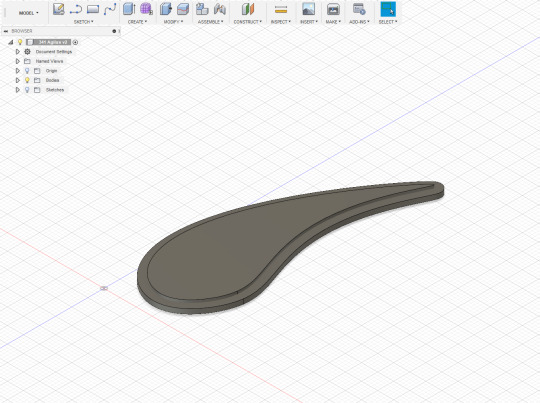
Agilus Form:
We added the logo to the agilus form, the logo was coloured but due to the shore of material, the colours were very sheer.
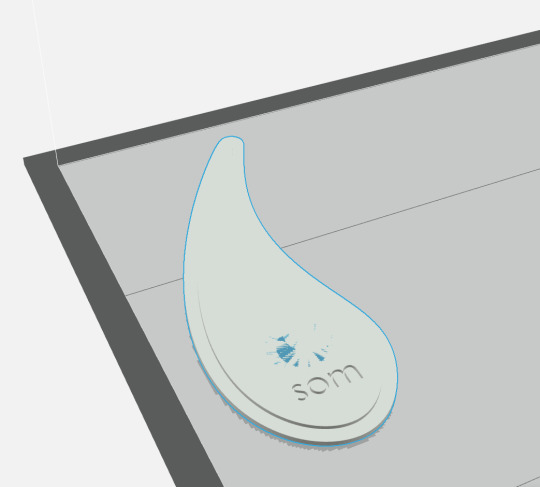
Sewed into glove
The final agilus form was sewed into the final glove model. The glove is made with merino wool, this material is stretchy, and breathable so it won’t cause the user to sweat more than they naturally would. Sewing the agilus in was difficult because the merino ripped.
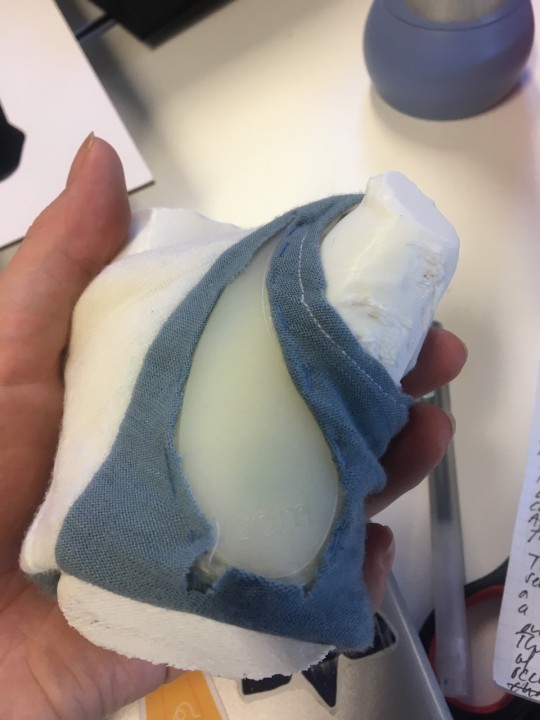
Who did what?
Development of agilus form: Lily and Isobel
3D modelling of Agilus: Lily
Setting up GrabCad file: Lily
Sewing into glove: Isobel
0 notes
Text
Sensor Form
To hold the input sensors we thought the hand would be the best location. The pulse is found on the wrist and the palms have a high sweat production. We looked into making a glove, this would be a comfortable option compared to the EEG headsets we were looking into earlier.
Initially beginning the form development we explored a variety of different precedent products that were created to fit within a similar region of the body. These images were particularly helpful as they demonstrated minimal aesthetics similar to what we were looking to pursue.

Structural restrictions for form development:
The only restrictions on the form are the two areas in which it needs to be in contact with. The device needs to be secure enough to provide an accurate pulse reading and in contact with the palm to provide a sweat sensor reading. Additionally, the form can’t be too dense as to ensure it doesn't encourage sweat to be produced which would tamper with the sweat produced from a nightmare triggering a false reading.

Exploring comfortable forms with clay:
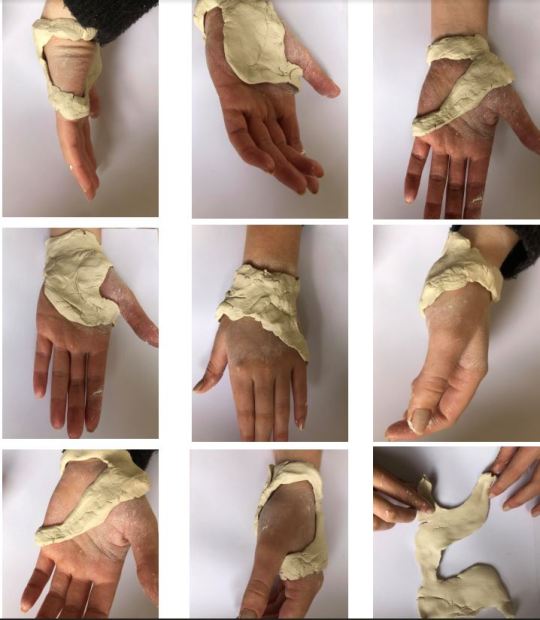
In addition to making the clay forms we mocked a couple of CAD iterations as well - however, after discussing practicality further we decided for the purpose of comfort it would be more appropriate to make out of fabric.
Development:
Before trying to iterate these forms directly with fabric we wanted to experiment with actual gloves to get a better idea of how our form should sit. We used plastic gloves and experimented with how we could remove different parts and how this would feel. This then gave us a template to take forward into the fabric.
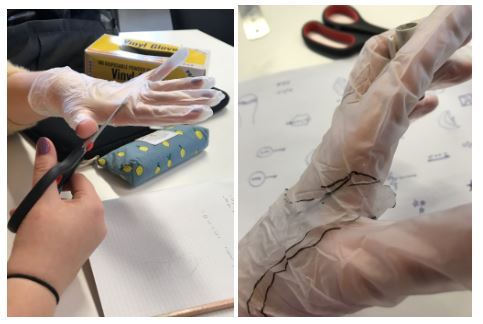
Development with Fabric:
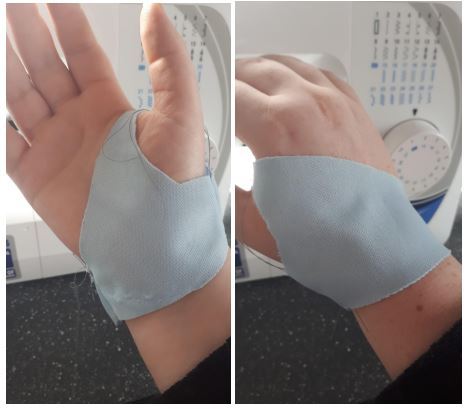
Found with fabric that the form would have to be a bit bulkier than with clay in order to keep the glove in the right place. Then worked on making it fit the hand better while also being able to come on and off.
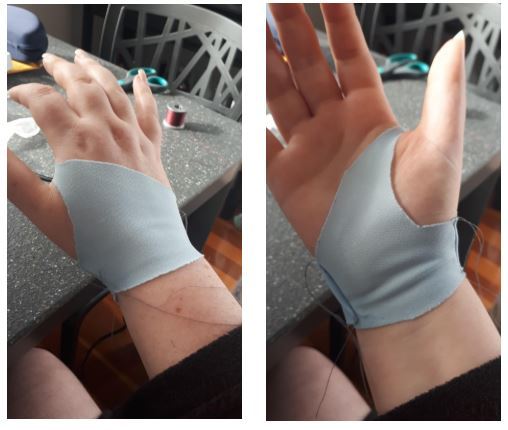
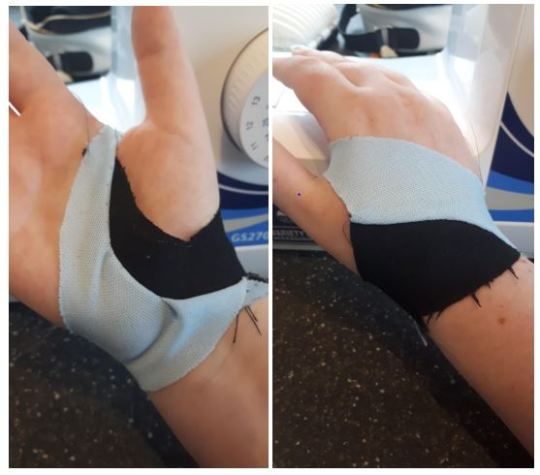
Played with adding in another more rigid material to help hold form where sensors and electronics would be located. Played with adding in another more rigid material to help hold form where sensors and electronics would be located. Due to the flexibility of material sweat sensor will need to be closer to thumb rather than the centre of the palm.
Who did what?
Inital concepts with clay etc: Steph
Development: Steph, Isobel, Lily
Development with Fabric: Isobel
0 notes
Text
Form
Once we figured out the ideal input and output, we began to look at precedents for form and how we were going to make it all work together.
We decided to have three components, a wearable device that contains the sensors and monitors the user, an app that collects and stores the data and a companion device that sits on the bedside table and releases the aroma and light.
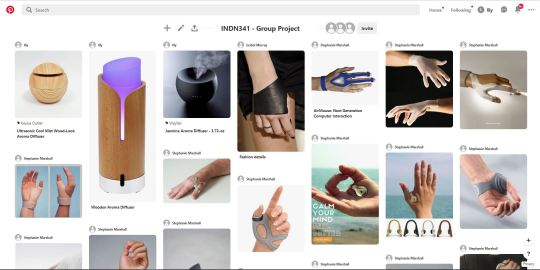
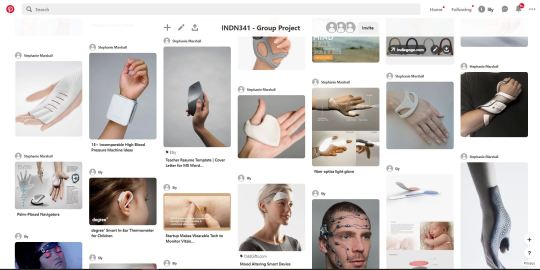
For the overall aesthetic of the products, we decided to go for a minimalistic feel with small accents of colour or wood. The colours used will likely be ones associated with sleep, such as light purple, grey, light blue and white.

We also are considering to products to be customisable to each user, they can possibly choose a form, patterns and colours to make the device fit them.
The app will be a place where the user can monitor their dreams if they wish. The app will possibly contain:
- Information about the device.
- On/off functions for the device.
- Data collection
- A visual representation of data.
- A dream journal area
- An area to send the information to a doctor or therapist if you need/want to.
Who did what?
Discussion and ideas: Lily, Steph and Isobel
0 notes
Text
Output
Our focus is to bring someone out of a nightmare. Originally, we were going to use a loud sound, but some research shows this isn’t the best thing to do because the person often finds it difficult to fall back to sleep after they have been woken up and they vividly remember their dream.
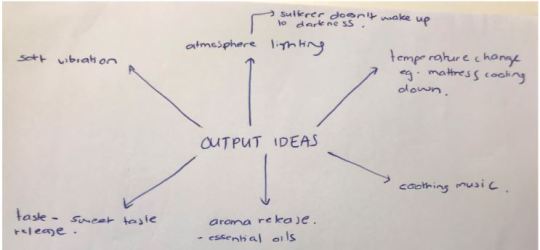
Looking at more sleep studies and PTSD treatment studies we found that aroma and aromatherapy can change a dream state. (1) This study shows that nice smells, such as roses, can influence someone to have a good dream whereas bad smells, such as rotten eggs, can influence them to have a bad dream. Aromatherapy is used in PTSD patients as treatment, “ Lavender is a wonderful essential oil for PTSD because it can help alleviate fear, anxiety, stress, panic and depression, as well as reduce nightmares and sleep disturbances” (2). We are looking into using an aroma diffuser to release essential oils when the sensors detect a nightmare, this will hopefully change the user's dream state or bring them into a lighter sleep and take them out of the dream altogether.
We also looked at light. Many people who experience traumatic nightmares go to sleep with a nightlight, this allows them to fall asleep with ease. Light can be used when the user is falling asleep and can also turn on when they are experiencing a nightmare, the light will hopefully bring them out of deep sleep and into a light one (similar to what the sun does) or is on if they naturally wake up from a nightmare.
So, the final input is sweat and heart rate and the output is aroma and light.
1. https://www.webmd.com/balance/news/20080922/smells-during-sleep-may-shape-dreams
2. https://www.ptsduk.org/ease-symptoms-ptsd-aromatherapy/
Discussion and research: Lily, Steph and Isobel
0 notes
Text
Moving away from EEG
After talking with Helen about the EEG sensors, she advised us to go down a different route and monitor heart rate and sweat production instead. When someone is having a nightmare their heart rate increases and they begin to sweat, these readings would be more accurate than the EEG sensor.
We decided that the input from the Arduino would be sweat and pulse, to record this we could use a pulse sensor and a sweat sensor.
After doing some research and trying the find the sensors we settled on a heart rate sensor, similar to a pulse sensor, and a rain sensor, we couldn’t get hold of a sweat sensor (due to shipping times), so this was the next best option; the rain sensor still picks up small amounts of moisture well, like sweat.
Research on Sweat Sensor:

https://randomnerdtutorials.com/9-biometric-sensors-arduino-compatible/

https://www.amazon.com/ZIYUN-Galvanic-conductance-electrodes-detecting/dp/B01FY3ROR4
Sensors we purchased:

Heart Rate Sensor (Purchased from TradeMe: around $6)

Rain Sensor (Purchased from Jaycar, already owned)
Now that we had our inputs, we had to decide on what the output would be
Who did what:
Research of ideal components: Isobel, Steph and Lily
0 notes
Text
Using an EEG
We decided that in order to get a better understanding of EEG and the headsets we would need to see one for our self. Our team contacted Victoria University Design Psychology Lecturer Helen Andreae as we knew she had access to an EEG sensor in the hopes that she would allow us to see how it worked. We set up a meeting and found Helen to be a very helpful resource.
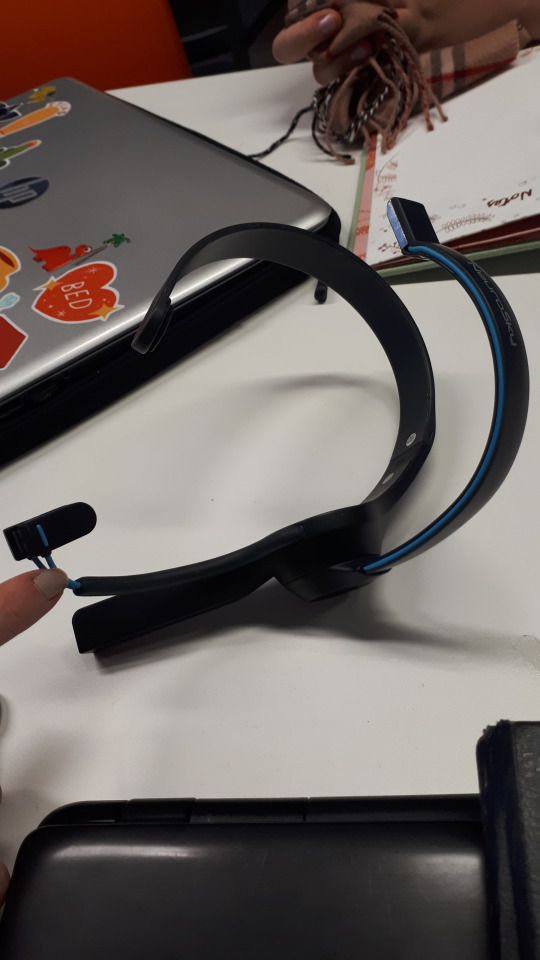
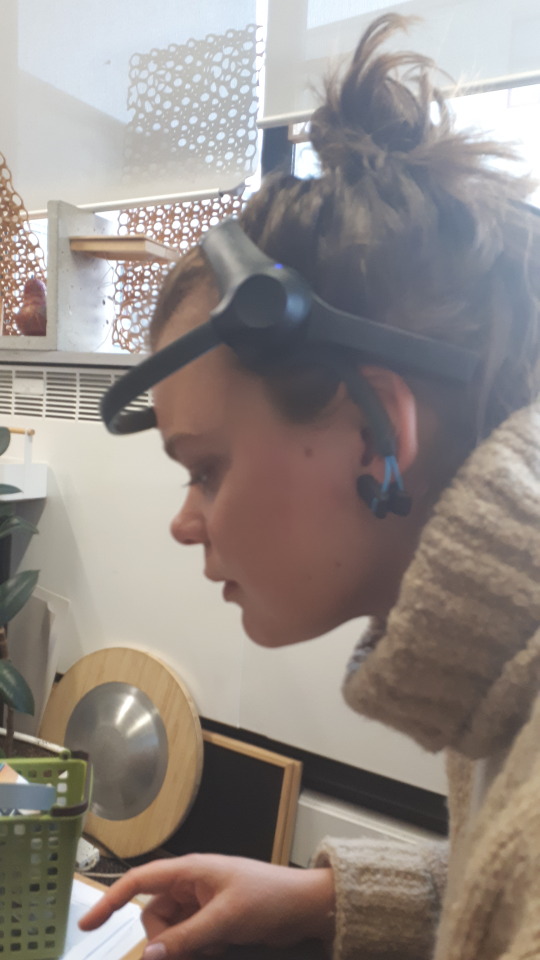
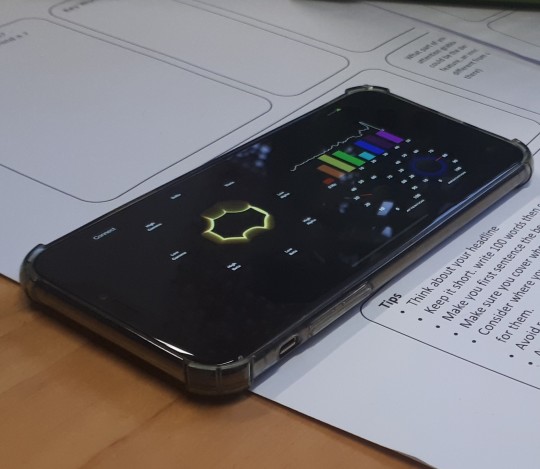
Our team was able to try on a Nurosky headset and see through an app the way it monitors brain activity. We found that the headset was uncomfortable and it would be very difficult to have all the required parts in a way that was comfortable and noninvasive for sleeping. Helen also informed us that these readings were never very accurate. Peoples brain activity is very different from person to person and that EEG may not be the best way to detect a nightmare. She suggested we look into different sensors that may offer a more accurate indication and will be less invasive than a headset for sleeping in.
Who did what?
Organising to meet Helen: Steph
Talking with Helen: Lily and Isobel
0 notes
Text
EEG Sensor Research
We started by researching what type of software there was available to make sure it was plausible to achieve our idea.
Recommended by: https://makeitmech.com/material-required-for-portable-eeg-system-development/
Multisim: Multisim is simulation software for various designs. This software is widely used because almost all required components are available in it. It is a tool used for testing various programs, simulations and complex electronics designs. It is also used for schematic designing and capture and for PCB (Printed Circuit Board) designing. We have used multisim for developing simulation circuits for Main Board and all other 3 stages of the circuit. PCB is also designed using the same software. - Has a free variation with less options
MATLAB: MATLAB is used for real time signal plotting. We used MATLAB as a tool for analyzing real time signal. AS the signal was quite noisy and fluctuating so we used MATLAB scope to plot the signal in real time. MATLAB is platform for mathematics and all types of functions and signal processing. WE can also use MATLAB for further signal processing. We used only the Simulink part of the MATLAB for Arduino board values. - Has a one month free trial avalible
Arduino IDE: The Arduino IDE is the software for Arduino development board. The Arduino IDE is used for writing Arduino Code for the EEG circuit. The Arduino code to identify the threshold values of ADC and averaging the EEG signal values. - the free arduino coding software
Recommended by: http://openeeg.sourceforge.net/buildeeg/software.php
BWView (http://uazu.net/bwview/)
This application, released as free software under the GNU GPL v2 for Linux and Windows, is designed for getting a rapid visual understanding of recorded brain-wave data. It uses FFT-accelerated convolution to do the analysis, which enables much greater flexiblity than using the traditional FFT-of-windowed-data approach. The frequency is plotted on a log scale, which is much better for viewing data that includes a wide range of frequencies. The window size is proportional to the wavelength at any frequency, so the convolution is effectively being done with a complex wavelet at various different scales. The ratio of window size to wavelength can be varied easily to allow different aspects of the data to be shown. Features:
Visually displays EEG data.
Platforms: Linux, Windows
This told us that there were many different Software that would be adequate to help us in our project. We then looked into existing headsets that use EEG:
When looking at these headsets it appeared that comfort and accuracy would be the main issue. Most headsets that exist currently are made of a hard plastic and are not comfortable to wear for extended periods of time.
Products such as Muse (https://choosemuse.com/) are used to monitor brainwaves to assist meditation and utilize a conductive rubber for added comfort. However, there is still a hard metal band for the sensors which would not be comfortable to sleep in.

Products like Emotiv (https://www.emotiv.com/) highlight the fact that the use of gels and liquids increases the accuracy of the readings. This means that electrodes constantly need replacing and also the added discomfort of liquids on the head during sleep makes this approach unlikely to be plausible for our idea. This means our readings will never be as accurate as they can be.

Even Sleep Shepherd (https://sleepshepherd.com/) a device already designed to sleep in looks bulky and has hard pieces that would make some sleeping positions highly uncomfortable. The use of soft materials however does show us that our idea is plausible.

Who did what?
Research: Steph
0 notes
Text
PTSD Research
“Post-Traumatic Stress Disorder (PTSD) is a psychological reaction to experiencing or witnessing a significantly stressful, traumatic or shocking event” (1). The traumatic event may be an attack, a car crash, sexual assault or involvement at war. The severity of the trauma from each event may vary and it can affect anyone, but it is most common among soldiers, refugees and sexual assault victims. The sleep of those with PTSD is often disturbed as they experience terrible nightmares that relive their trauma, they also experience ‘flashbacks’ during the day that are triggered by particular sounds, smells, images or memories. PTSD can be curable through different treatments, such as medication, therapy, counselling, hypnotherapy, yoga, aromatherapy, relaxation and ensuring the physical health of the person is good. (1)
7.7 million Americans suffer from PTSD and 96% of them experience terrifying nightmares (3). “The patient awakens from a terrifying recurrent dream, sweating, heart beating fast and often unable to fall asleep again that night” (2), “these patterns of nocturnal sleep disruptions are often associated with excessive somnolence, fatigue, difficulties in concentration, irritability, and feelings of helplessness, which have a detrimental effect on the individual’s quality of life.” (5). Due to the nightmares often waking the person a lot of people with PTSD suffer insomnia. One person who suffered from PTSD nightmares said he developed sleep apnea but could not wear the oxygen mask to sleep as it reminded him of his traumatic experience in a plane crash. Another person resorted to sleeping pills to cure insomnia because they were too ashamed to admit they suffer from PTSD (2). Research suggest that this disturbance in sleep can worsen the condition of PTSD, the person is normally unconsciously on guard and this caused anxiety which can cause them to be irritable and find it difficult to sleep (2).
PTSD nightmares don’t only interrupt the suffers sleep, but it can also interrupt the sleep of their spouse (if they share a bed) (4). The nightmares often cause the suffer to violently trash and move around, this can sometimes be dangerous, but the spouse is urged not to wake their partner as the dream is likely to pass and they will forget about it in the morning and if they do wake up they will be scared and find it hard to go back to sleep (4).
There are ways to avoid PTSD nightmares by managing them while you are awake. They can create a relaxing, stress-free bed-time routine and fall asleep with a nightlight to ease anxiety (4). Avoid drugs and alcohol, those who suffer PTSD can use these as a coping mechanism, but the side-effects can be awful (4). Do something relaxing or something they enjoy every day (4). Image rehearsal therapy is when the person is made to think about the dream and recreate a different ending, re acting this alternative ending over and over should eventually change the dream (5). Lucid dreaming where the person forces them self to have the nightmare while conscious will allow them to have control over what happens, and this lessens fear.
(1) https://www.mentalhealth.org.nz/get-help/a-z/resource/45/post-traumatic-stress-disorder
(2) https://www.sleepfoundation.org/articles/ptsd-and-sleep
(3)https://www.sleep.org/articles/understanding-the-connection-between-ptsd-and-nightmares/
(4) https://www.sleep.org/articles/deal-with-spouse-ptsd-nightmares/
(5) https://www.ncbi.nlm.nih.gov/pmc/articles/PMC6263296/
Who did what?
Research: Lily
0 notes
Text
Group Idea Development
This group was formed with the idea of making a device that would use EEG sensors to monitor brainwaves while an individual was asleep. This device will detect when the individual is having a nightmare and will wake them up.
Coming into the first group meeting it was decided that we should streamline this idea to focus on a specific demographic. After some surface research on nightmares, we discovered that the two main sufferers of chronic nightmares are children and people who suffer from PTSD.
For the context of this assignment, we figured there would be more need for a device to help people suffering from PTSD and so that is the group we decided to focus on going forward.
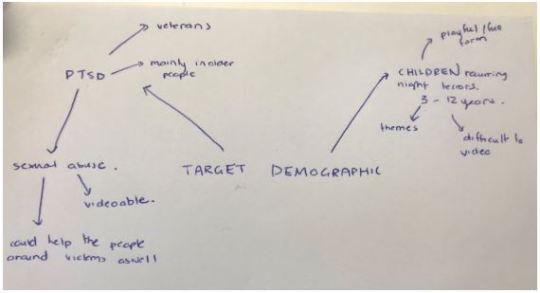
Who did what?
Discussion: Isobel, Steph and Lily
1 note
·
View note